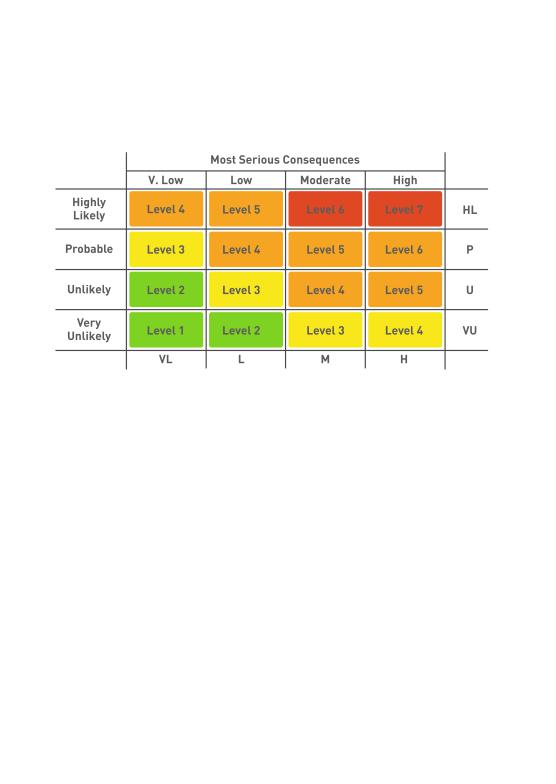
01 POWER ISLAND / 01 CCPP / DOE__Understanding Natural Gas and Lng Options October 11 2017_1
.pdf
FINANCING AN LNG EXPORT PROJECT
New countries and companies are seeking to develop new LNG supply projects; construct large numbers of LNG ships; and develop new LNG regasification terminals. Patterns of ownership and project structures are changing and the boundaries of risk allocation between buyers and sellers are shifting. This has a direct impact on the ability to finance LNG projects, at a time when the availability of third-party finance could become squeezed with the implementation of Basel III guidelines which determine how much capital banks must set aside for long-term loans. Moreover, these developments are taking place in an environment of reduced gas prices combined with uncertain price projection scenarios.
Limitations in the availability of third-party debt could lead to greater use of shareholder funds, which in itself will limit the number of companies that can invest in the LNG sector. Projects need competitive lending as a means of mitigating debt costs and improving overall economics. Reduced availability of project finance debt may undermine some LNG project developments. It will also encourage the use of alternative financing structures and expand the role of export credit agencies (ECAs), which are already being used by energy consuming governments as a way of seeking a competitive advantage in sourcing LNG.
On the other hand, there are positive signs for the development of LNG and natural gas markets. First, there are an increasing number of LNG importing countries, which provide more opportunities for offtake contracts as well as a diversification of the contracts portfolio to cater for an array of economic and political risks. Second, the reduced LNG price has enabled more customers to access the commodity, which provides for an increase in the overall market size and customer base. Third, new technologies such as floating storage regasification units and smaller scale LNG transport mechanisms allow for a more flexible market that can serve a wider array of customers. Smaller scale LNG also provides a platform for developing the natural gas market in emerging economies.
Natural gas has been recognized as an important part of the clean energy mix, with demonstrated success in lowering emissions. Trends indicate that the LNG market is maturing and will provide more diverse options for both producing and procuring LNG that could serve a variety of institutional and private customers.
176

Risk
Management
Introduction
Risk Management and LNG Business
Types Of Risk In LNG

RISK MANAGEMENT
Introduction
Managing risk is important for each organization involved in an LNG project to understand. The host government, local community, project developer, EPC contractor, upstream developer, LNG buyer and financier(s) all have risks they need to understand, manage and mitigate. Risks are generally not eliminated by the decisions that are made, but rather are shared between these institutions.
Each entity has certain roles and responsibilities and these come with risks for that party and the other parties. If risk allocation is clear and each entity is responsible for mitigating their own risks, then all parties can confidently proceed with project development. The choice of commercial model, for example, can determine if the LNG project developer bears the upstream cost risk or if that is borne by the upstream entities and whether the allocation of market risks is to the project developer or to a different entity who owns the LNG and takes that market risk.
For an import LNG facility, there is the risk that the local demand and completion of the infrastructure (local distribution, power generation, etc.) may not be ready to absorb the imported LNG.
178

RISK MANAGEMENT
Risk Management and LNG Business
LNG Investment and Risk
Key risk models recognize the intricacies of LNG investment and will also consider risks within Africa. In order to encourage LNG investment in Africa, a robust and effective risk profiling approach is a prerequisite. Price dynamics (price risk) will continue to change the fundamentals for key LNG investment decisions, especially in African countries. In today's changing price environment, hedging and managing long-term price risk has become a more complex and challenging part of project implementation.
Unforeseen in-country upstream drilling and completion, facility, pipeline and transportation cost escalation or schedule delays may impact the initial volumes of natural gas available to the LNG facility. This may also be coupled with price dynamics if the transfer price is a factor (for a nonintegrated commercial model) that could determine whether an LNG facility bears the risk for upstream capital investment. The costs and completion risks for the LNG plant itself can be shared between the project developer and the EPC contractor.
For the marketing of LNG from an export facility, demand from “traditional” LNG customers is predicated on supply and demand forecasts which are by their nature uncertain, as evidenced by today's LNG supply glut in the marketplace. The four biggest LNG importers, China, India, Japan and South Korea, account for almost two-thirds of global demand but Japan and South Korea are not likely to see significant demand growth in the future. Demand is expected to grow in China and India, but the timing of this growth is uncertain. An alternative for potential African LNG exporters to mitigate market risk may be to pursue a strategy based around smaller LNG export projects. It is worth noting that smaller import market players (< 3 MTPA, Egypt, Pakistan, Eastern Europe, etc.) have grown their market share by over 50% over the last two years and now account for more than 10% of global market share.
179

RISK MANAGEMENT
An equal number of smaller markets are actively trying to establish LNG import facilities such as ECOWAS countries, South Africa, Myanmar, and so on.
LNG Risk Structure
When considering LNG investment, it is important to consider the drivers for a successful investment decision through specific risk management methodologies. The primary goals for corporations investing in LNG are to cost effectively build, or expand, LNG trains, improve export or import capacity, provide least cost environmentally and technically sound LNG facilities that generate an economically viable products stream (LNG, LPG , condensate) for maximum investor return.
LNG Risk Management Methodologies
Methods and tools for portfolio and risk management are locally defined to deliver increased capital efficiency and greater resistance against strategic, operational and market risks. This stage avoids disputes through a proactive and comprehensive framework for managing risks and claims. Risk review supports the project stakeholders' need to understand their tolerance of risk in terms of safety, environmental, financial, reputation, and performance risk in order that risk limits can be appropriately defined and decision-making processes informed.
180

RISK MANAGEMENT
Types of Risk in LNG
Below is an example of an LNG Risk Register:
Type of Risks |
Risk Description |
Risk Mitigation |
|
|
|
|
|
Market Risk |
LNG Market balance and competition |
Economic analysis |
|
|
|
|
|
Political & Regulatory |
Policy change, government stability, |
Engage government as partner to |
|
Risk |
energy regulatory framework |
financial and development |
|
|
|
negotiations |
|
|
|
|
|
Development Risk |
Land rights ownership, FEED study |
Follow known and rigid development |
|
|
completion, site and land access |
processes, leases, contracts, and |
|
|
|
documentation stages |
|
|
|
|
|
Financial Risk |
Sovereign Guarantees, World Bank |
Manage financial actions through |
|
|
guarantees, credit worthiness of LNG |
known, transparent international |
|
|
off-taker, LNG offtaker financial |
monetary vehicles. Engage investors |
|
|
commitment to upstream, LNG |
willing to support long-term |
|
|
Facility and other auxiliary investment |
sustainable programs |
|
|
(Power Plant) |
|
|
|
|
|
|
Environmental Risk |
Natural disaster potential, endangered |
Follow international environmental |
|
|
species, air and water quality |
standards from World Bank, ISO, and |
|
|
emissions to populated areas |
main treaties to mitigate future |
|
|
|
environmental or regulatory issues |
|
|
|
|
|
|
|
|
|
181

RISK MANAGEMENT
Type of Risks |
Risk Description |
Risk Mitigation |
|
|
|
|
|
Engineering, |
EPC guarantees and warranties, EPC |
Engage proven EPCs with track record |
|
Procurement & |
ability to leverage local content with |
to include full "sign-off" of EPC terms |
|
Construction Risk |
adequate service delivery, training, |
and Local Content and Social |
|
|
and schedule assurance |
Responsibility mandates |
|
|
|
|
|
Community Impact |
Competition for road access, air, light, |
Engage local government, commercial |
|
Risk |
dust, and noise impacts, social and |
and industry early in development to |
|
|
cultural impacts, waste disposal, price |
include full communications planning. |
|
|
increase for food, health and |
Invest early in community-focused |
|
|
sanitation on community |
programs |
|
|
|
|
|
Personnel Safety |
Worker safety, control of criminal |
Invest early in community security and |
|
|
activity, trafficking control |
safety training programs |
|
|
|
|
|
Health Impact |
Limit community and worker exposure |
Invest sufficiently early in community |
|
|
to disease, minimizing strain on |
health and education/information |
|
|
healthcare facility availability. Road |
programs |
|
|
safety |
|
|
|
|
|
|
Compliance Penalties |
Creating a culture of compliance, |
Develop project management office |
|
|
timely payment of penalties, |
for full communications, change |
|
|
enforcement of international treaties |
control, and compliance program |
|
|
for compliance (e.g., Child Labor), |
requirements |
|
|
reporting and monitoring |
|
|
|
|
|
|
Corporate Reputation |
Outreach and reputation to |
Investment in country, community, and |
|
|
community through low to high tech |
communications programs for local |
|
|
communications, local content |
and global communications of joint |
|
|
training, community training, primary |
government, corporate, and project |
|
|
and secondary school level training, |
successes |
|
|
healthcare provisions, revenue |
|
|
|
investment back to impacted |
|
|
|
community |
|
|
|
|
|
|
Country Reputational |
Political reputation federal, state and |
Support governmental public policy, |
|
Risk |
local, community positive impacts, |
marketing, communications and |
|
|
transparency and visible local |
highlight international investment to |
|
|
investment into society food, water, |
promote country level success |
|
|
energy, and human security |
|
|
|
|
|
|
182

RISK MANAGEMENT
Below is a sample of a Risk Matrix:
183

Local Content
Introduction
Definition of Local Content
Developing an Effective Local Content Policy
Implementation of Local content
Stakeholder Engagement
Ancillary Infrastructure Development
Managing Expectations
Comparing Local Content Policies

LOCAL CONTENT
Introduction
Increasingly, countries are looking for ways to realize the value of natural resources wealth as early in the project lifecycle as possible. At the forefront of this drive is the push for local content policies (LCP) aimed at linking natural resource projects to the deliberate utilization of local human and material resources and services in order to stimulate the development of indigenous capabilities and encourage local investment and participation.
This can result in higher employment, private sector growth through small and medium enterprises (SMEs), increased manufacturing activities due to demand for goods and services, increased export trade, and technology transfer. One important aspect of LCP is the extent to which the output of the natural resource sector generates further benefits to the economy beyond the direct contribution of its value-added, through its links to other sectors.
Many African governments do not have clear policies to capture these benefits, or where policy and legal instruments exist, the provisions are inadequate to deliver results. Few spell out the mechanisms necessary to build the capacity of national private and public institutions. Governments need to establish the institutional capacity to help local companies meet industry, technological and safety standards necessary to compete in the global market. Governments also must recognize industry commercial barriers that currently reduce the ability of local firms to compete. Laws and regulations should adequately address institutional, legal and skills requirements for effective implementation and monitoring. Governments must work in close collaboration with local and foreign private sector partners to ensure that policies are implemented in a way that benefits all parties.
185
